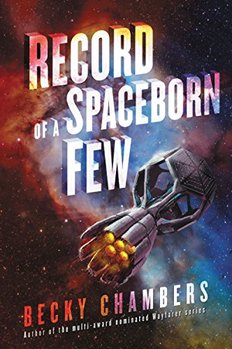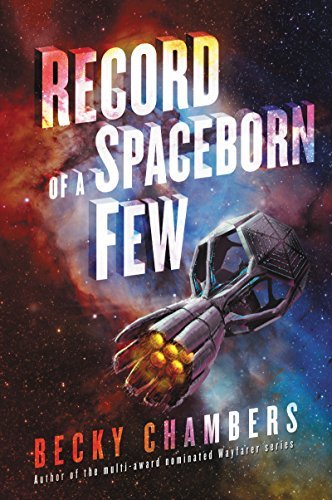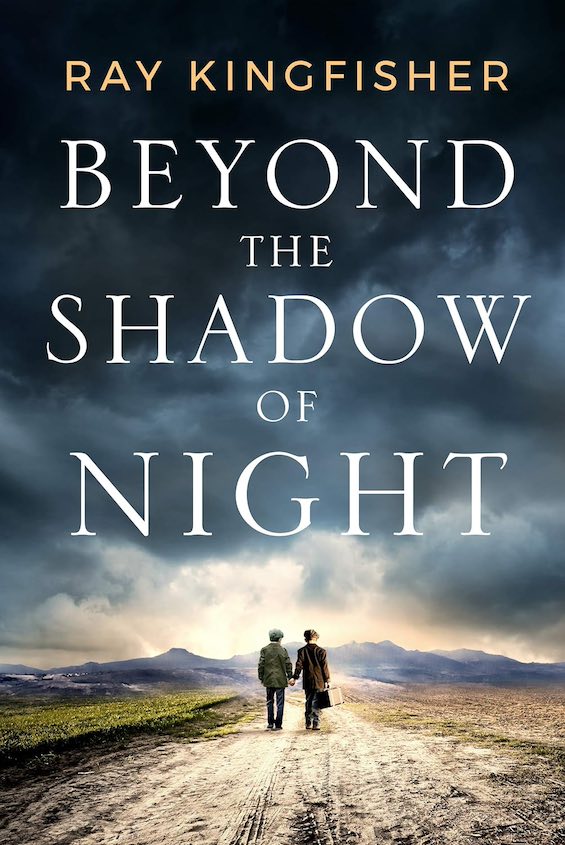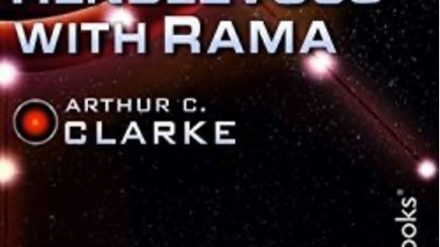
Try to imagine the changes that might take place in the everyday life, language, and behavior of the human race several centuries from now. Assume, too, that our species has abandoned the Earth to seek a new life in space. It’s a staggering challenge, isn’t it? Most science fiction writers take the easy way out. Their characters speak and act in ways that any of us in the early 21st century would recognize. The culture they depict would fit nicely in any advanced nation today. To paint a more realistic picture of that future existence requires a special talent. American science fiction author Becky Chambers displays that talent in abundance in Record of a Spaceborn Few, the third novel in her outstanding new series, Wayfarers. She portrays a brilliant invented universe in a highly readable and enjoyable way.
Estimated reading time: 4 minutes
In the two preceding entries in the series, Chambers introduces us to strange new worlds. The Long Way to a Small, Angry Planet tells the tale of the motley crew on a ship that cruises through the galaxy “punching” wormholes into space. (I reviewed the book as A delightful modern space opera that’s all about character development.)
Record of a Spaceborn Few (Wayfarers #3) by Becky Chambers (2018) 368 ★★★★★
Finalist for the 2019 Hugo Award for Best Novel and Winner of the 2019 Hugo Award for Best Series
The second entry, A Closed and Common Orbit, features two of the characters in Angry Planet. In part, it’s the story of an AI that moved into an organic humanoid body and accompanied one of the crew members to her home planet. (My review is Lovable characters in this off-beat space opera.) Chambers’ characters are beautifully complex, the dialogue often sings, and a brilliant invented universe emerges seamlessly from the story.
Whoever it is who writes the blog “Book Riot Swords & Spaceships” sums it up this way: “The Long Way to a Small Angry Planet is about finding your family. A Closed and Common Orbit is about finding yourself. Record of a Spaceborn Few is about finding your place.”
Action confined to a single locale
In this fascinating novel, Chambers again confines the action to a single locale. The story unfolds on the Asteria, one of the 300-year-old ships in the fleet that bore the remnants of the human race into space. Things happen. There is a plot. And the story is suspenseful. But once again the emphasis is on character development. And her primary purpose seems to be not to tell an exciting story but to depict a society and a culture that is different from anything we know today in a great many ways. It’s different in the way people talk, the assumptions they make about life, the food they eat, the jobs they do, and the way their society is organized. People are people, of course. They’re still recognizable. But the world they inhabit is not.
In less talentedter devices to paint her picture of life on the Asteria. A young man visits the ship to experience the life of his ancestors who had left the fleet generations earlier. Two bored teenage boys discuss what they’ll do one afternoon. An official conducts a ceremony to commemorate the birth of a new child. A five-year-old boy learns about the way that human corpses are converted into compost to grow the crops that feed the living. And an alien academic visits the fleet to learn its history and the way life is lived among the many thousands who remain in space. It’s all seamless.
For related reading
In addition to the books in Chambers’s Wayfarers series, I’ve also reviewed an excellent hard sci-fi novel she wrote: To Be Taught, If Fortunate—An excellent hard science fiction novella from Becky Chambers. And I’ve included Becky Chambers on my list of Six new science fiction authors worth reading now.
For more good reading, check out:
- These novels won both Hugo and Nebula Awards
- The ultimate guide to the all-time best science fiction novels
- 10 top science fiction novels
- The top 10 dystopian novels
- Ten new science fiction authors worth reading now
And you can always find my most popular reviews, and the most recent ones, on the Home Page.


























